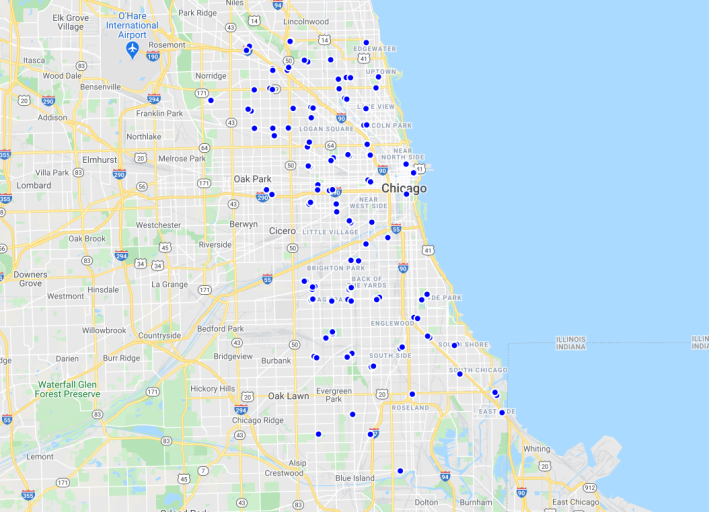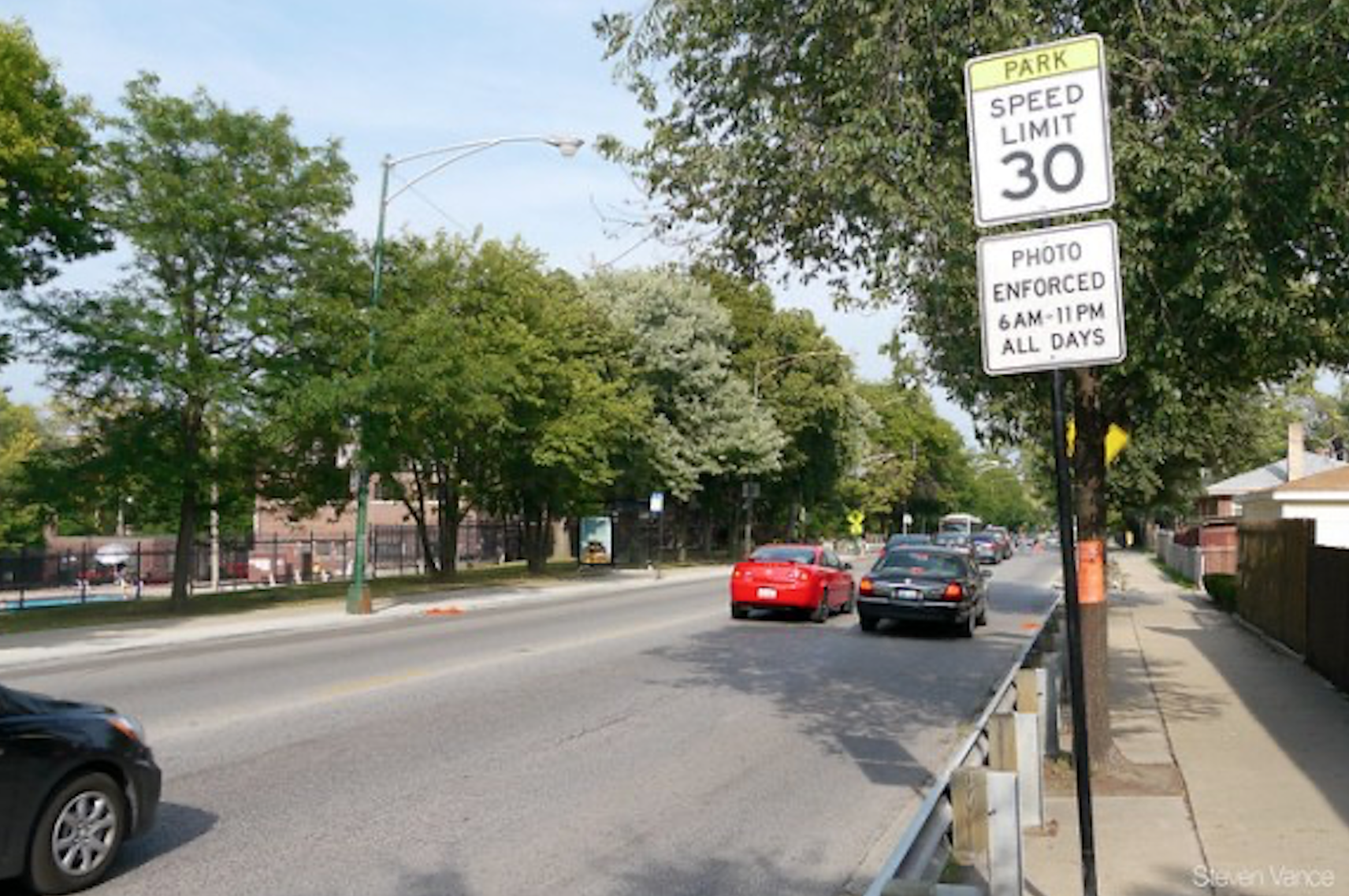Streetsblog Chicago didn't endorse Mayor Lori Lightfoot's plan to lower the city's speed camera ticketing threshold to 6 mph. Our rationale was that the pandemic, when many people are already financially struggling, isn't a good time to start issuing citations for relatively minor offenses. Moreover, the move was such a transparent effort to find revenue to plug Chicago's budget hole that we feared it would inspire a new backlash against automated enforcement, when there have already been serious efforts to ban the technology in Illinois. Since the cams have been shown to significantly reduce the types of crashes likely to result in serious injuries, that would be counterproductive to public safety.
On the other hand, the city did have a decent argument for lowering the threshold. While there were 72 traffic fatalities on Chicago streets from January through September 2019, there were 100 traffic deaths during the same period this in 2020, likely due to increased driving speeds during COVID-19, when traffic volumes have been lower. Moreover, relatively minor changes in speed can make a big differences in crash outcomes. Studies show that while pedestrians struck at 20 mph almost always survive, and those struck at 30 mph have a roughly 50/50 chance of survival, those struck at 40 mph almost always die.
Since Lightfoot's ordinance passed, we'll have a chance to see whether the change in ticketing protocols helps reduce the serious crash rate, and also whether it has any negative equity impacts. (Meanwhile, a new state criminal justice reform bill would end license suspension for unpaid red light and speed camera tickets -- license revocations has been shown to disproportionately impact low-income people of color.)
Last Friday the city announced it would begin issuing warning letters to inform drivers that starting March 1, it will start ticketing speeders in Child Safety Zones, located within 1/8 mile of schools and parks, starting at 6 mph over the speed limit during hours of enforcement.
“Automated speed enforcement is a proven deterrent to speeding," said Chicago Department of Transportation chief Gia Biagi in a statement. "Faced with an unacceptable increase in speeding and traffic fatalities, we are taking action to save lives and prevent serious injuries. The goal is not to issue tickets, but to encourage safer driving behavior and discourage speeding that is correlated with more severe injuries and deaths in traffic crashes.”
Again, it's going to be hard for many residents to take seriously the claim that raising ticket revenue isn't part of the goal, since the initiative was announced as part of Lightfoot's budget package. But hopefully the change will result is less speeding and fewer serious crashes.
Starting last Friday, owners of vehicles that are caught speeding 6 to 10 mph over the speed limit will receive a warning by mail. After March 1, tickets will be issued. If a vehicle owner has never previously received a speed cam ticket, they will only get a warning for the first ticket. Fines are $35 for vehicles traveling 6-10 mph over the speed limit and $100 for vehicles going 11 MPH or more over the speed limit. (Previously the penalty was $35 for going exactly 10 mph over the limits, and then $100 for exceeding the limit by 11 mph and above.)
Friday's announcement noted that total traffic deaths for 2020 were up by 45 percent compared to the previous year, with 139 fatalities, 43 more deaths than 2019. Deaths of people riding in motor vehicles were up 77 percent, from 52 to 92. The press release said vehicle drivers traveled 9 percent faster on average on city streets last year compared to 2019.
Of the current 161 Child Safety Zones in the City, many of them have had their cameras de-activated due to school and park closures associated with the coronavirus. Currently speed cams are active in 33 park zones and 14 school zones. These numbers are subject to change in the coming days and weeks and will be updated on the city’s speed camera web page.

Chicago's speed camera ordinance requires an equitable geographic distribution of speed cams around the city. CDOT has divided the City into six regions and each region may have no fewer than ten percent of the total number of camera enforced zones.
The ordinance narrows the hours and locations of enforcement that are allowed under state law, and provides for the following:
- The enforcement hours are limited to 7 a.m. to 7 p.m. in safety zones around schools on school days (Monday through Friday)
- 7 a.m. to 4 p.m.: 20 mph speed limit when children are present; the posted speed limit when no children are presentAND
- 7 a.m. to 7 p.m.: the posted speed limit
- The enforcement hours around parks are limited to only those hours parks are open (typically 6 a.m. to 11 p.m., 7 days a week, however some parks operate with different hours, which are taken into account for purposes of enforcement).





